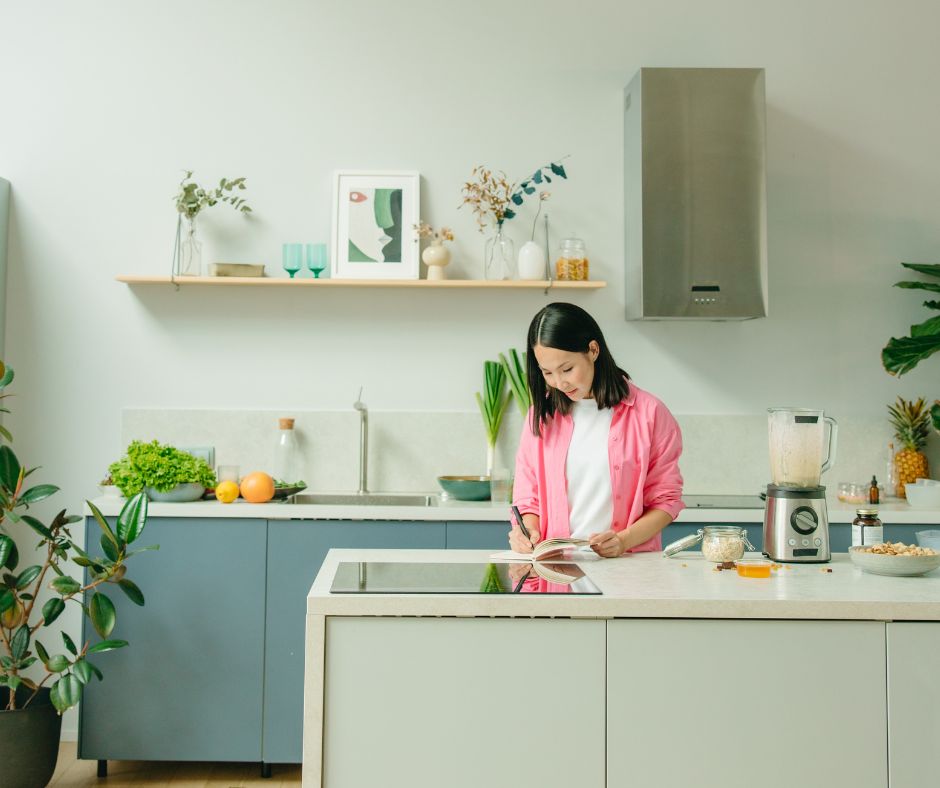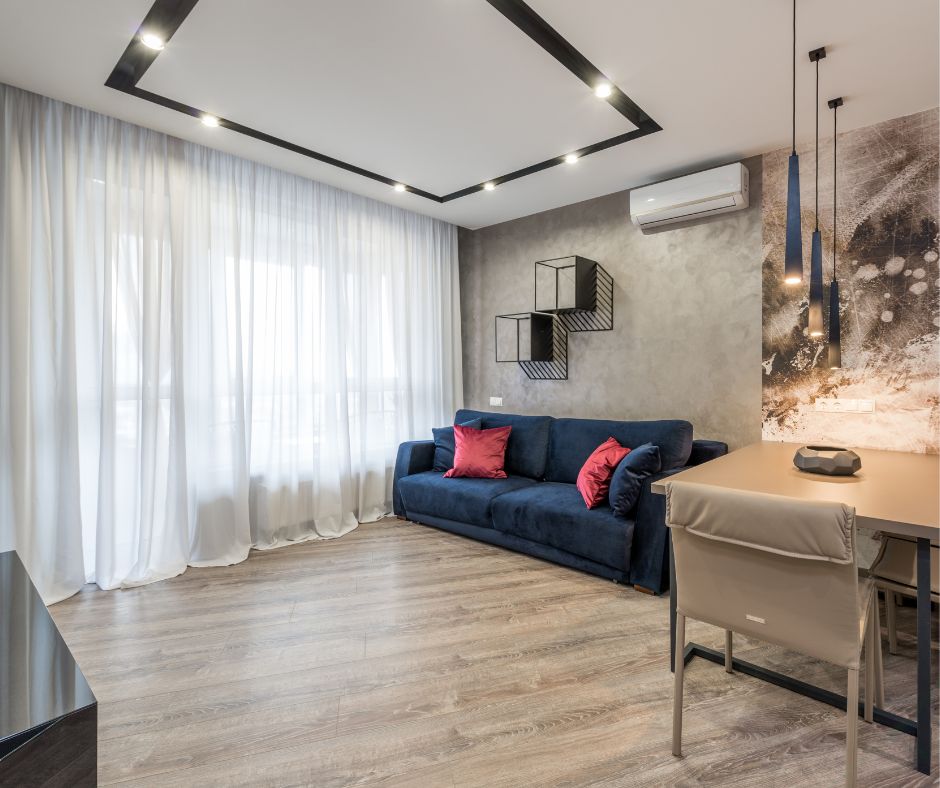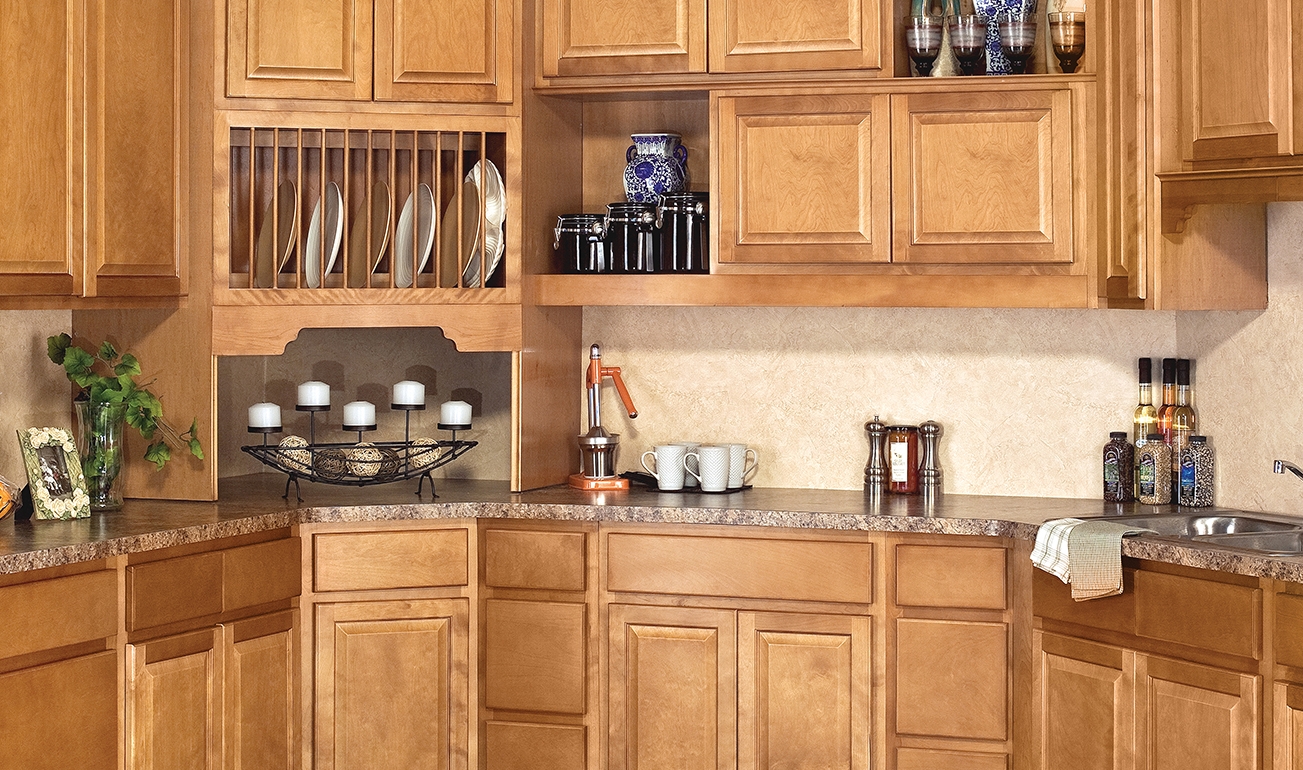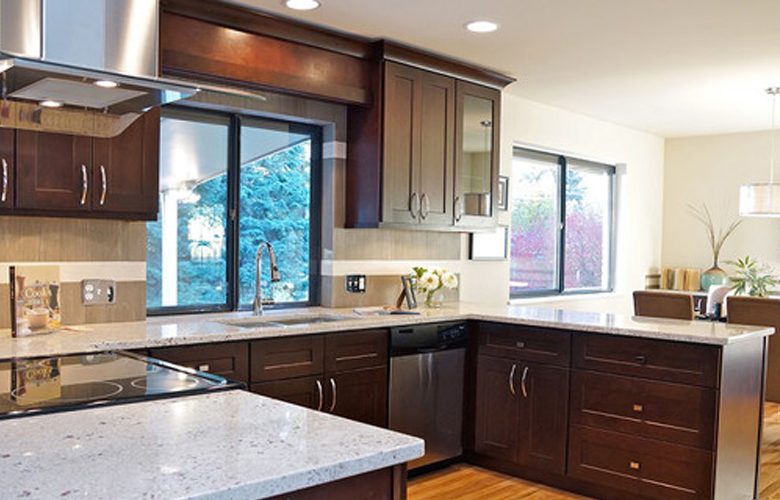Your home is a canvas waiting to be transformed, and one of the most impactful ways to do so is by updating your flooring. Whether you’re looking to replace old, worn-out floors or simply seeking a fresh, new look, proper preparation is the essential foundation for a successful flooring installation.
Embarking on a flooring installation project can be an exciting transformation for your home, but it’s not without its fair share of questions and uncertainties. From choosing the right materials to ensuring a seamless installation process, there are numerous factors to consider. To help you navigate this crucial home improvement endeavor, we’ve compiled the top 10 frequently asked questions (FAQs) that homeowners often encounter when preparing their homes for new flooring.
Join us on this journey as we unveil the secrets to a seamless flooring installation that not only enhances the aesthetics of your living space but also adds value and comfort to your home. Get ready to embark on a home improvement project that will leave a lasting impression, all starting with the right preparation.
What’s the first step in preparing my home for flooring installation?
The crucial first step in preparing your home for a successful flooring installation is clearing the designated space. This involves removing all furniture, appliances, and personal belongings from the room where the installation will take place. This essential step ensures that the installation crew has an unobstructed and clean workspace, allowing them to work efficiently and without any hindrances.
Once the room is emptied, the focus shifts to the existing flooring. If your room has old carpet, tile, or hardwood, these materials should be removed. This exposes the subfloor, which must be thoroughly inspected for any damage or irregularities. Addressing these issues at this stage is crucial to prevent complications during the installation.
Moreover, consider any necessary subfloor repairs or modifications. The subfloor must be level, clean, and dry before the new flooring is installed. Any imperfections or moisture-related concerns should be resolved promptly to ensure a stable foundation for your new flooring.
How do I choose the right type of flooring for my home?
Selecting the ideal flooring type for your home involves a thoughtful decision-making process. Here are key steps to help you make an informed choice:
- Evaluate Your Lifestyle: Begin by considering your household’s lifestyle and the specific needs of each room. High-traffic areas like the living room or kitchen may require more durable flooring options like hardwood, laminate, or luxury vinyl. Bedrooms, on the other hand, can accommodate softer materials like carpet for added comfort.
- Set a Budget: Determine your budget for the flooring project. Different flooring materials come with varying price ranges, so it’s essential to establish a budget that aligns with your financial capabilities.
- Aesthetic Preferences: Think about the overall aesthetics and design of your home. Your flooring choice should harmonize with your interior design style and color scheme. Different materials offer various colors, patterns, and textures, allowing you to achieve the desired look.
- Consider Maintenance Requirements: Some flooring materials demand more maintenance than others. For instance, hardwood floors may require periodic refinishing, while carpets need regular vacuuming and cleaning. Assess your willingness and ability to maintain your floors when selecting a material.
- Environmental Considerations: If sustainability is a priority, explore eco-friendly flooring options like bamboo, cork, or reclaimed wood. These choices have a lower environmental impact and contribute positively to your home’s green footprint.
- Seek Professional Guidance: Don’t hesitate to consult with flooring professionals. They have valuable insights into the pros and cons of different materials and can offer recommendations tailored to your specific needs and lifestyle.
- Sample Selection: Before finalizing your decision, obtain samples or swatches of your preferred flooring materials. Placing these samples in the room where they will be installed allows you to visualize how they will look alongside your existing decor and lighting.
By carefully considering these factors, you can confidently select the right flooring material for your home that aligns with your lifestyle, budget, and aesthetic preferences.
Do I need to remove my old flooring before installing new flooring?
In most cases, it is advisable to remove the old flooring before installing new flooring. This process ensures a clean slate, eliminating potential issues and providing a level surface for the new flooring. Here’s why:
a. Height and Threshold Consistency: Removing the old flooring prevents uneven height discrepancies between rooms. If new flooring is installed over existing flooring, it can result in an awkward transition between rooms, creating trip hazards and visual inconsistencies.
b. Inspection and Repairs: Removing the old flooring allows for a thorough inspection of the subfloor. Any underlying issues, such as water damage, rot, or unevenness, can be identified and addressed before the new flooring is installed. This proactive approach ensures a stable foundation for the new flooring, preventing problems in the future.
c. Adhesive and Underlayment Compatibility: Certain types of flooring, such as hardwood or luxury vinyl, may require specific adhesives or underlayment materials for proper installation. Installing new flooring over old flooring may not provide the ideal surface for these adhesives or underlayments to adhere to, potentially compromising the quality and longevity of the installation.
d. Moisture Concerns: Moisture can become trapped between layers of flooring if the old flooring is not removed. This trapped moisture can lead to mold, mildew, and damage to both the subfloor and new flooring.
While there are instances where new flooring can be installed over existing flooring, such as with certain types of floating floors, it’s essential to consult with flooring professionals to determine whether this approach is suitable for your specific project. In most cases, the thorough removal of old flooring is the recommended and safest practice.
What is subfloor preparation, and why is it important?
Subfloor preparation is a critical aspect of flooring installation that involves getting the subfloor in optimal condition to ensure a successful and long-lasting flooring installation. Here’s why it’s so important:
a. Stability and Durability: A properly prepared subfloor provides a stable foundation for your new flooring. It ensures that the flooring material will not shift, buckle, or develop uneven surfaces over time, thus increasing the overall durability and longevity of your floors.
b. Smooth and Level Surface: Subfloor preparation aims to create a smooth and level surface. This is vital, as any imperfections or irregularities in the subfloor can lead to visible defects in the flooring above, such as gaps, bulges, or cracks. A smooth subfloor ensures a seamless and aesthetically pleasing result.
c. Moisture Control: Subfloor preparation includes measures to address moisture issues. Excess moisture can lead to mold, mildew, and damage to the subfloor and flooring material. Proper preparation helps mitigate moisture-related problems and ensures a dry and healthy environment.
d. Adhesive Bonding: Many flooring types require adhesives for installation. A well-prepared subfloor provides an ideal surface for adhesives to bond securely, preventing issues like delamination or detachment of the flooring material.
e. Sound Insulation: Subfloor preparation may include adding materials that improve sound insulation. This is especially important in multi-story homes or buildings where noise transfer between floors can be a concern.
Subfloor preparation typically involves steps such as leveling, cleaning, and ensuring that the surface is free from debris, adhesives, and contaminants. Depending on the condition of the subfloor, additional measures like moisture barriers or underlayment installation may be necessary.
In summary, subfloor preparation is crucial because it enhances the stability, durability, and aesthetics of your flooring installation while addressing moisture concerns and promoting proper adhesive bonding.
Can I install new flooring over existing tile or hardwood?
In some cases, it is possible to install new flooring over existing tile or hardwood, but several factors need to be considered:
a. Condition of Existing Flooring: The condition of the existing tile or hardwood is paramount. It should be in good condition without significant damage, warping, or loose tiles or boards. If the existing flooring is severely damaged or uneven, it’s generally not suitable as a base for new flooring.
b. Height and Thresholds: Installing new flooring over existing tile or hardwood may result in an increase in floor height. This can create inconsistencies in floor levels between rooms or cause issues with door thresholds. Be prepared to address these height differences if they occur.
c. Material Compatibility: Ensure that the new flooring material is compatible with the existing surface. For instance, certain types of floating floors or engineered hardwood may work well over existing hardwood, while other materials may not adhere properly to tile or hardwood.
d. Subfloor Evaluation: Consider the condition of the subfloor beneath the existing tile or hardwood. If there are concerns about moisture, unevenness, or structural integrity, it may be necessary to address these issues before proceeding with the new flooring installation.
e. Consultation with Professionals: It’s highly recommended to consult with flooring professionals or contractors experienced in such installations. They can assess the specific conditions of your existing flooring and subfloor to determine whether installation over existing material is a viable and safe option for your project.
In many cases, especially if the existing flooring is in good condition, installation over tile or hardwood can be a cost-effective and efficient solution. However, it’s essential to ensure that the proper preparation and installation methods are followed to achieve a successful and long-lasting result.
How long does the entire flooring installation process typically take?
The duration of a flooring installation project can vary depending on several factors, including the type of flooring material, the size of the area being covered, and any necessary subfloor preparations or repairs. Here’s a general overview of timeframes for common flooring types:
- Hardwood Flooring: Installing hardwood floors can take several days to a week or more, depending on the size of the area and whether it involves sanding and finishing.
- Laminate Flooring: Laminate flooring installation is typically quicker and can often be completed within a couple of days for an average-sized room.
- Carpet Installation: Carpet installation can be completed in a day for most rooms, although larger or more complex spaces may take longer.
- Tile Flooring: Tile installation can range from a few days to a week or more, depending on factors like tile size, pattern complexity, and the need for precise grout work.
- Vinyl or Luxury Vinyl Plank (LVP): These types of flooring are usually quicker to install, often within a day for an average-sized room.
It’s important to note that these timeframes are general estimates and can vary based on the expertise of the installation team, any unforeseen complications, and the specific requirements of your project. To get a precise timeline for your flooring installation, consult with your chosen flooring professionals, who can provide a more accurate estimate based on your unique circumstances.
Is it possible to install flooring in high-moisture areas like bathrooms or kitchens?
Yes, it is possible to install flooring in high-moisture areas like bathrooms and kitchens, but it’s essential to choose the right type of flooring material and take appropriate precautions to protect against moisture-related issues. Here are some options and considerations:
- Tile: Ceramic or porcelain tiles are excellent choices for moisture-prone areas. They are highly resistant to water and can be installed with waterproof grout for added protection. Proper sealing and professional installation are crucial to prevent moisture from seeping through the grout lines.
- Luxury Vinyl Plank (LVP) and Luxury Vinyl Tile (LVT): LVP and LVT are waterproof flooring options suitable for kitchens and bathrooms. They mimic the look of wood or tile while offering superior water resistance. Ensure proper installation and seam sealing to maintain their waterproof properties.
- Sheet Vinyl: Sheet vinyl flooring is another water-resistant option, ideal for bathrooms and kitchens. It provides a seamless surface that inhibits water penetration. Properly seam and edge seal the vinyl to prevent moisture infiltration.
- Engineered Hardwood: If you desire the look of wood in these areas, consider engineered hardwood. It is more resistant to moisture than solid hardwood due to its layered construction. However, it’s essential to install an effective moisture barrier and acclimate the wood to the room’s humidity levels before installation.
- Bamboo and Cork: These eco-friendly flooring options are naturally resistant to moisture. They can be suitable for kitchens and bathrooms but require proper sealing to maintain their water resistance.
To ensure the longevity of your flooring in high-moisture areas, professional installation is essential. Additionally, maintain proper ventilation and use exhaust fans in bathrooms and kitchens to minimize humidity and moisture accumulation. Regularly inspect and address any potential water leaks or spills to prevent damage to your flooring.
Do I need to be home during the flooring installation process?
While it’s not always mandatory to be present during the entire flooring installation process, it is advisable and often preferred for several reasons:
- Access and Decision-Making: Being present allows you to provide access to your home and make real-time decisions if any unexpected issues arise during installation.
- Questions and Clarifications: Installation crews may have questions or need clarifications regarding your preferences or specific details about the project. Your presence enables immediate communication and resolution.
- Quality Assurance: Your presence ensures that you can inspect the work as it progresses, addressing any concerns or issues promptly, thus helping to ensure the quality of the installation.
- Final Walkthrough: Being present for the final walkthrough with the installation team allows you to review the completed work, ask questions, and address any remaining concerns before the crew leaves.
However, if you are unable to be present during the installation, it’s essential to appoint a trusted representative, such as a family member or neighbor, to act on your behalf. Ensure that they have clear instructions and contact information for the installation team in case of any questions or issues.
Ultimately, your presence or that of a designated representative can contribute to a smoother and more satisfactory flooring installation experience.
Are there any safety precautions I should take during flooring installation?
Yes, safety precautions are vital during flooring installation to ensure the well-being of both occupants and installation professionals. Here are some key safety measures to consider:
- Proper Ventilation: Ensure that the installation area is well-ventilated, especially if adhesives or finishes are being used. Adequate ventilation helps disperse fumes and odors and promotes a healthier indoor environment.
- Safety Barriers: If there are children or pets in your household, establish safety barriers to prevent them from entering the installation area. This reduces the risk of accidents and keeps them away from potentially hazardous materials.
- Keep Walkways Clear: Maintain clear walkways to and from the installation area to minimize tripping hazards. Remove any obstacles or clutter that may impede safe passage.
- Protective Gear: If you plan to be present during installation, consider wearing appropriate protective gear, such as closed-toe shoes and safety goggles, especially if any cutting or drilling is involved.
- Communication: Maintain open and clear communication with the installation team. Discuss any safety concerns or precautions they may recommend and follow their guidance.
- Children and Pets: If you have young children or pets, consider arranging for them to stay with friends, family, or a pet daycare during the installation. This not only ensures their safety but also minimizes disruptions for the installation team.
- Secure Loose Items: Remove any loose items, such as rugs or small decor, from the installation area. These can pose tripping hazards or be accidentally damaged during the process.
- Safety Data Sheets (SDS): Request Safety Data Sheets for any adhesives, finishes, or materials used during installation. These sheets provide information on handling, exposure, and safety precautions related to specific products.
By prioritizing safety precautions, you can create a secure environment for everyone involved in the flooring installation process and help ensure a smooth and accident-free project.
What can I do to maintain and extend the life of my new flooring?
Properly maintaining new flooring is essential to protecting your investment and extending the life of your floor. Here are some tips to help you maintain the beauty and functionality of your floors:
- Regular Cleaning: Establish a routine cleaning schedule appropriate for your flooring type. Vacuum or sweep regularly to remove dirt and debris that can scratch the surface. For hard surfaces, damp mop with a manufacturer-recommended cleaner.
- Avoid Harsh Chemicals: Refrain from using harsh chemicals or abrasive cleaning agents on your floors, as these can damage the finish or surface of the flooring material. Stick to recommended cleaning products.
- Use Protective Measures: Place doormats at entryways to capture dirt and prevent it from being tracked onto your floors. Additionally, use furniture pads or protectors under heavy furniture to prevent scratching and indentations.
- Wipe Up Spills Promptly: Accidental spills happen. It’s crucial to clean them up promptly to prevent stains and damage. Use a clean, damp cloth to wipe spills away.
- Area Rugs: Consider using area rugs or runners in high-traffic areas to reduce wear and tear on your flooring. Be sure to use rug pads to prevent them from sliding and causing damage.
- Proper Sunlight Exposure: Excessive sunlight exposure can cause some flooring materials, such as hardwood, to fade or discolor. Consider using window treatments to protect your floors from prolonged direct sunlight.
- Professional Maintenance: Depending on your flooring type, it may require periodic professional maintenance. For example, hardwood floors may need refinishing every few years to maintain their luster and integrity.
- Follow Manufacturer Guidelines: Always follow the manufacturer’s maintenance and care guidelines specific to your flooring material. These guidelines are tailored to ensure the best care and longevity for your floors.
By adhering to these maintenance practices and being attentive to the specific care recommendations for your flooring type, you can enjoy beautiful and long-lasting floors for years to come.
Conclusion
In conclusion, preparing your home for flooring installation is a critical step in achieving the beautiful and durable floors you desire. With the answers to these top 10 FAQs, you now have a comprehensive understanding of the essential aspects involved in this process. Whether you’re clearing the room, selecting the right flooring material, or ensuring subfloor perfection, proper preparation is the key to success.
Now that you’re equipped with this knowledge, it’s time to take action. If you’re planning a flooring project, consult with flooring professionals to discuss your specific needs and get personalized guidance. Whether you’re a DIY enthusiast or seeking professional assistance, this preparation will set the stage for a successful and satisfying flooring installation.
Don’t hesitate to reach out to experts in the field, gather samples of your preferred flooring materials, and embark on your flooring journey with confidence. By taking these steps, you’re on your way to transforming your home with a flooring upgrade that enhances both its aesthetics and functionality. Prepare well, make informed choices, and enjoy the lasting beauty and comfort of your newly installed floors.





